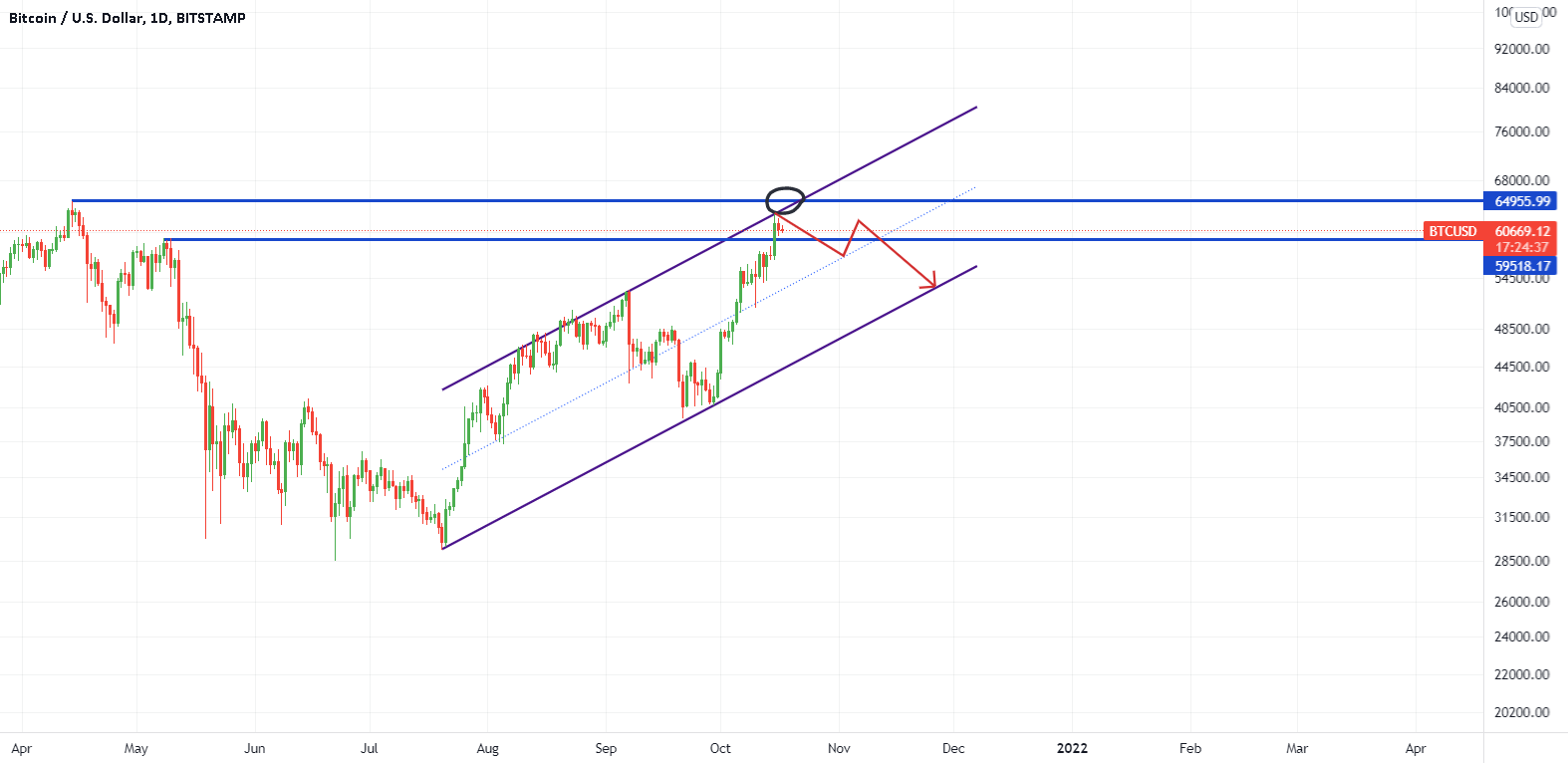Bitcoin’s price correction drop—plunging from its March 2024 all-time high of 73,000,000—has caused a frenzy among inexperienced investors. Veteran analysts and market strategists counter that such pullbacks are not only normal but also historically consistent in the bull cycles of Bitcoin. Fear grabs retail traders, institutional participants, and on-chain data points to a healthy reset just before the next move up. This paper investigates why professionals think the cycle high of Bitcoin is still months away, studies important technical and behavioral signals, and looks at what investors should keep an eye on while the market adjusts.
A Pattern of Volatility
Though its volatility is well-known, violent declines have always interspersed Bitcoin’s bull markets. For example, after climbing from 1,000,000 to 1,000,000, Bitcoin saw seven 30% + drawdowns. A 54% drop from 64,000,000 to 30,000,000 happened over three months before BTC recovered to $69,000. Comparatively small by nature, the latest 20% decline fits the average 28% quarterly volatility recorded since 2020.
Bitcoin Price correction does not rise linearly. Matrixport’s head of research, Markus Thielen, says corrections shake away weak hands, reset leverage, and lay a better basis for the next rise. According to on-chain analytics company Glassnode, the present fall reflects mid-cycle retracements observed in past halving years, notably the 29% decline in June 2020 before Bitcoin surged 300% to its cycle peak.
Analysts Cycle Peak
Although the bitcoin rate has lately dropped, several indicators suggest that the coin’s bull run is far from ending.
Time Since Halving

Historically, the April 2024 halving of Bitcoin—which cut miner incentives by 50%—has preceded cycle highs by 12–18 months. Previous peaks happened post-halving 546 days (2021) and 518 days (2017). Should this trend continue, the next highest point could land between late 2024 and mid-2025.
Market Value to Realized Value
Right now, the MVRV ratio—which compares Bitcoin’s market cap to its realized cap—the total cost base of all coins—is 2.1. This ratio exceeded 3.5 during previous cycle peaks, indicating room for expansion.
Institutional Accumulation
Even with the slump, BlackRock’s spot Bitcoin ETF (IBIT) continues to see over 4,000 BTC weekly inflows. “This is strategic accumulation—not euphoria,” argues BitMEX Research founder Arthur Hayes.
Bitcoin’s hash rate stays almost at an all-time high (700 EH/s) despite the halving’s strain. Public miners such as Marathon Digital have expanded their activities, thereby expressing long-term confidence.
Key Levels
Bitcoin price correction behavior hints at its almost future course: an n d 58,000 (50-day moving average) and 52,000 (200-day moving average). Rallies have typically started from these levels. 67,000 could reignite bullish momentum towards 73,000 and beyond. Order book data reveals strong buy-side liquidity between 59,000 and 61,000, indicating institutional bids are driving up the market. Often before bullish movements, the Relative Strength Index (RSI) on weekly charts has cooled from overbought (75) to neutral (55).
Fear vs. Opportunity

These elements have led to a somewhat negative retail attitude: Funds Amounts Negative perpetual futures financing rates point to a contrarian “buy” signal—that is, a bet against Bitcoin by traders. Searching for “Bitcoin crash” on Google Trends shows a 400% rise, a common panic signal observed near local bottoms. There is an increasing accumulation of “smart money”. Data from CryptoQuant shows that whales—those with more than one thousand Bitcoins—have added 85,000 Bitcoins to their holdings since May 2024. Analyst Willy Woo notes in passing that “retail sells the dip; institutions buy it.
Altcoin Factor
Different cryptocurrencies usually lead when a cycle shifts. Whereas Solana (SOL) and Dogecoin (DOGE) have dropped 40%, Ethereum has dropped 25% from its top position in 2024. This negative result indicates that the market still falls under a “risk-off” phase. Still, experts like Raoul Pal predict, on line with the fourth quarter of 2021, a “second altcoin season” after the top of Bitcoin.
Although the bull case is still strong, experts warn against assuming anything. Recent accusations against KuCoin by the DOJ and Tether (USDT) under investigation could cause markets to panic. The Bitcoin ETF (BITO) of Pro Shares had $1.2 billion in withdrawals in June 2024, indicating temporary trader surrender. Rising Middle East or U.S.-China trade conflicts might set off general market sell-offs.
Conclusion
Bitcoin price correction is a classic case study of market psychology in action. While seasoned investors see these declines as chances to position for the next part of the cycle, retail traders flee. Though not without volatility, historical patterns, institutional inflows, and better macro conditions all point to greater highs.
As Bitfinex observed in a June 2024 report: “The road to $100,000 Bitcoin will be paved with 30% drawdowns.” The secret for investors is to pay more attention to long-term indicators, such as adoption patterns and halving cycles, than daily price noise. The smart money is betting this dip is merely a stop on Bitcoin’s path to new heights, given that the MVRV ratio, miner activity, and ETF flows are still significantly higher.









